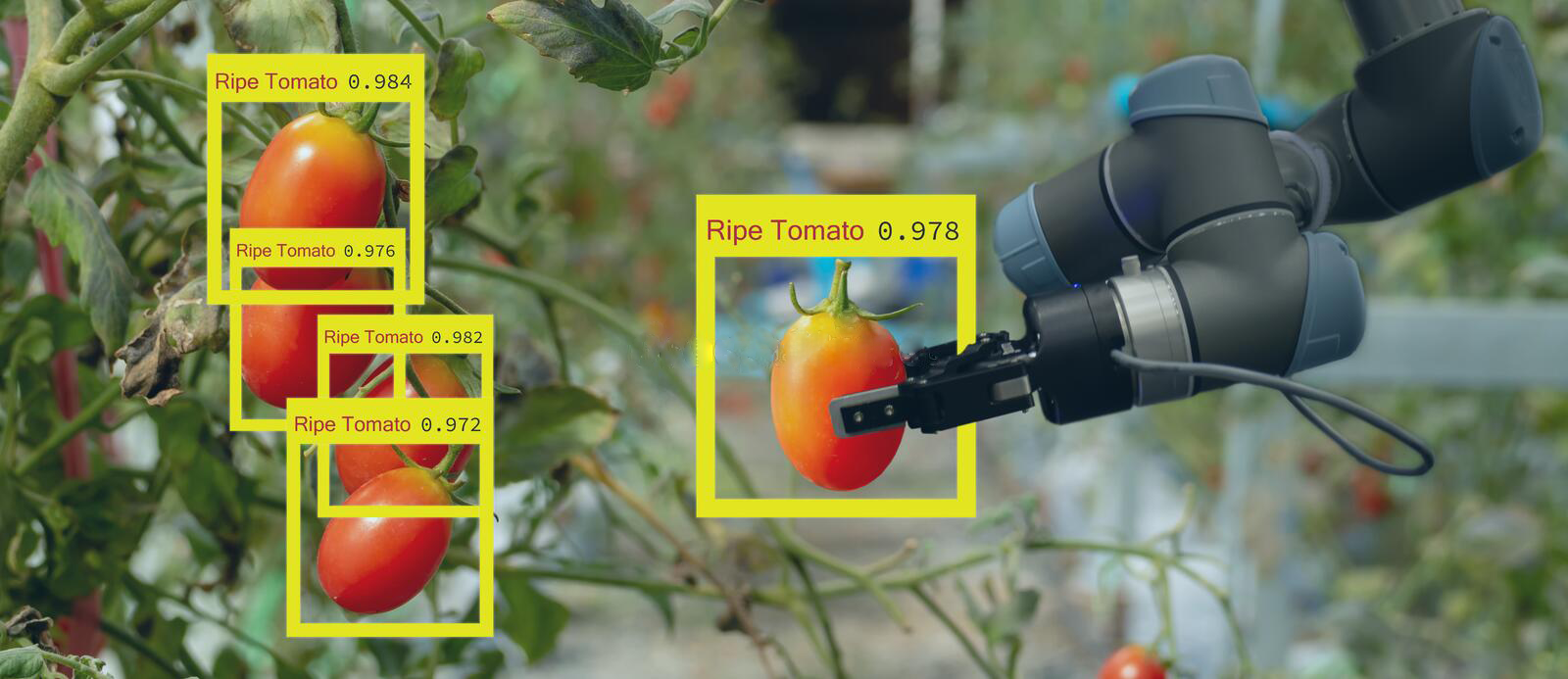Develop AI solutions in just 1 week?

Table of Contents
Machine vision technology has automated inspection processes such as defect detection, flaw analysis, classification, counting, and assembly verification in industry. Recent discoveries in computer vision software have advanced the capabilities of vision systems in new and innovative ways.
With a well-designed and properly installed vision system, the software can reliably detect defects. They can also improve an organization’s efficiency, throughput, and revenue.
Machine vision systems work by using an artificial intelligence tool called deep learning, which trains objects using patterns. Training based on these patterns is the fastest and most efficient way to build an AI model.
Steps to Build an AI Model in 1 Week
1- Image Data Collection
Data collection is a crucial step in developing an AI model. The quality and quantity of the dataset directly affects the decision-making ability of the AI model.
Data collection is immediately followed by a stage called image annotation, where the AI is provided with a visual indication of the locations and types of objects to be detected.
For example, in a deep learning model for car parts, every car part in the image must be placed in a box and labeled as such. There are two ways to create an image dataset for a deep learning model:
- The first is to use a public image dataset. These datasets are available online and are free to use, share, and modify by anyone. They contain millions of data points and annotations that can be reused to train and refine a Machine Vision model.
- The second is to create a custom dataset. It can be done by collecting data through a camera or any device with sensors.
2- Data Preparation
Data Preparation or Data Preprocessing is the process of transforming raw data to make it more meaningful. It can then be run on various Machine Learning algorithms to make predictions and discover insights. Data preparation is accomplished by addressing the following issues:
- Missing or Incomplete Records - Every data point for every record in the dataset is not always present. Some cells may have blank values.
- Outliers or Anomalies - Poor data validation, especially when pulling data from unknown sources, can sometimes cause unexpected values in the distribution.
- Improperly formatted data - Some data may need to be extracted in a different format or location. This issue is addressed by consulting domain experts.
- Inconsistent values - When multiple sources are combined to form a cohesive dataset, some variations in values may be present that need to be normalized.
- Limited features - There may be a requirement to build features in the data by combining datasets from different sources. Fuzzy matching can be complex in such cases.
Data preparation is necessary for the dataset to yield useful insights. Good data preparation will result in clean and well-managed data that leads to realistic and accurate model results.
3- Training and Deployment
While creating a deep learning solution, both the hardware and software aspects must be thoroughly tested to get the best results.
On the hardware side, the location of the target, the type of light and the direction of fall, the optics and the camera must be considered. Optimizing these physical components can simplify any complexity, minimizing the training data and the network size required for troubleshooting. This translates into faster training during development and higher accuracy during deployment.
On the software side, the training images should be as similar to the inferred images as possible. Projects with smaller datasets can benefit from this step and thus have a big impact on the performance of the model. Training the data and deploying the model is not the final step of a successful machine vision system. Continuous modifications are required to increase the efficiency of the system.
4- Fine-tuning
Fine-tuning a machine vision system can be done to improve the accuracy of the forecast results. This is done in the following steps:
- Understand what fine-tuning means in machine vision - The first step in fine-tuning an MV model is to explore how different parameters improve the accuracy of the model. The dataset is divided into dependent and independent variables and a closed-loop control system is designed to examine the effect of the independent variable on the system.
- Understand how your machine vision works - Different machine vision systems have different behaviors and therefore different approaches in which fine-tuning is required. To proceed with the fine-tuning process, a good understanding of the model is required.
- Find your score - To improve the accuracy of the model, the existing accuracy must be properly recorded. There are many metrics to measure the success of a machine vision system. It can be F1 score, Confusion Matrix, R squared, etc. Pick the one you want to improve.
- Continuously tune the parameters - Once the metric is chosen, it is recommended to continuously incorporate new training data as the machine vision model runs so that the model can train with all possible variations and larger datasets.
Therefore, a deep learning based system can be designed through the following steps:
- Image data can be collected in two days and then annotated for training purposes.
- Data preparation can also be done in two days using standardization and optimization techniques.
- Training and deployment of a deep learning based machine vision model can be done in two days, where 1 day is spent on training and 1 day is used to expose the model to industrial scenarios and test its performance.
Based on this performance, fine-tuning is done in 1 day and the model implementation is completed in a week.
